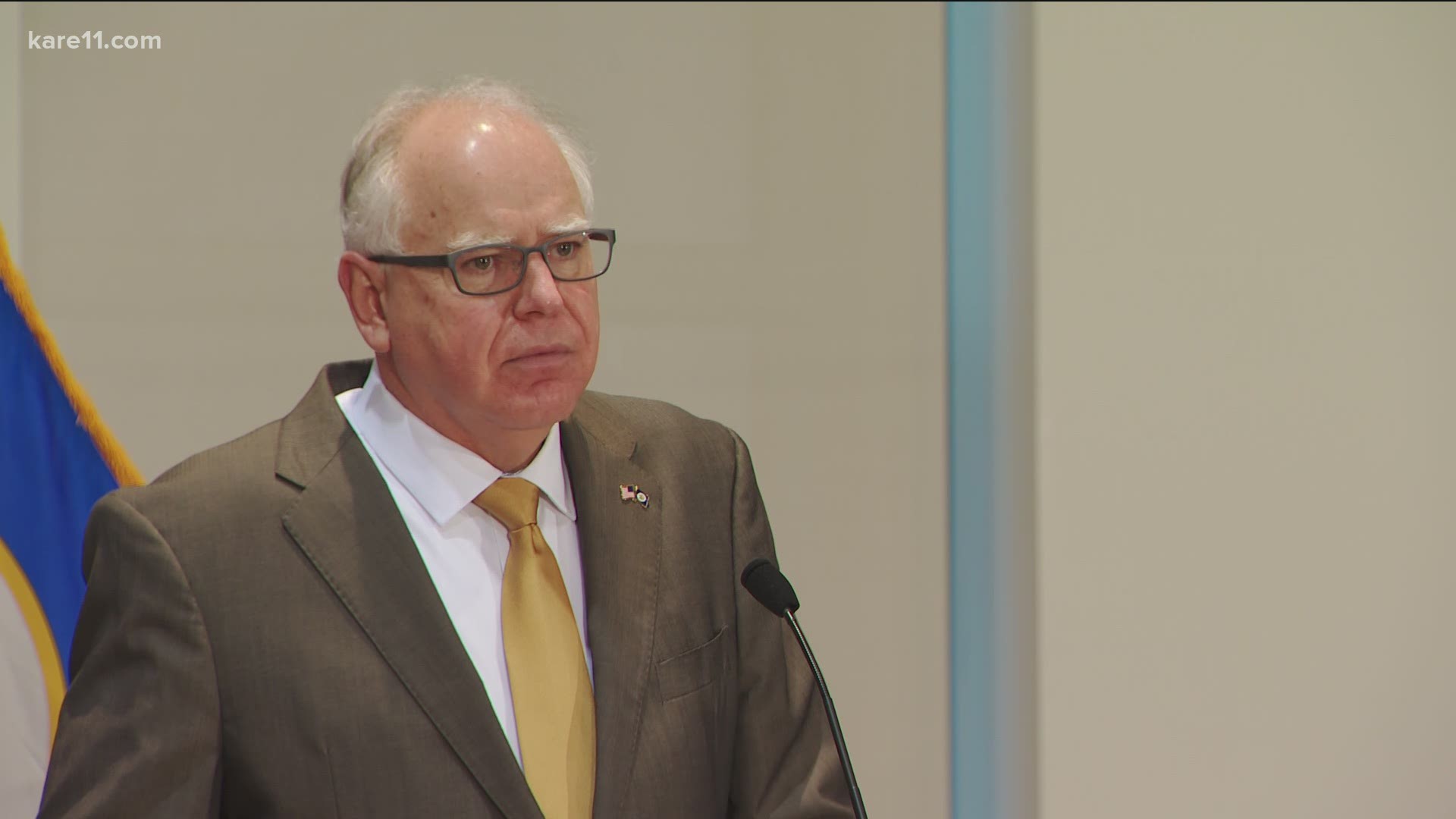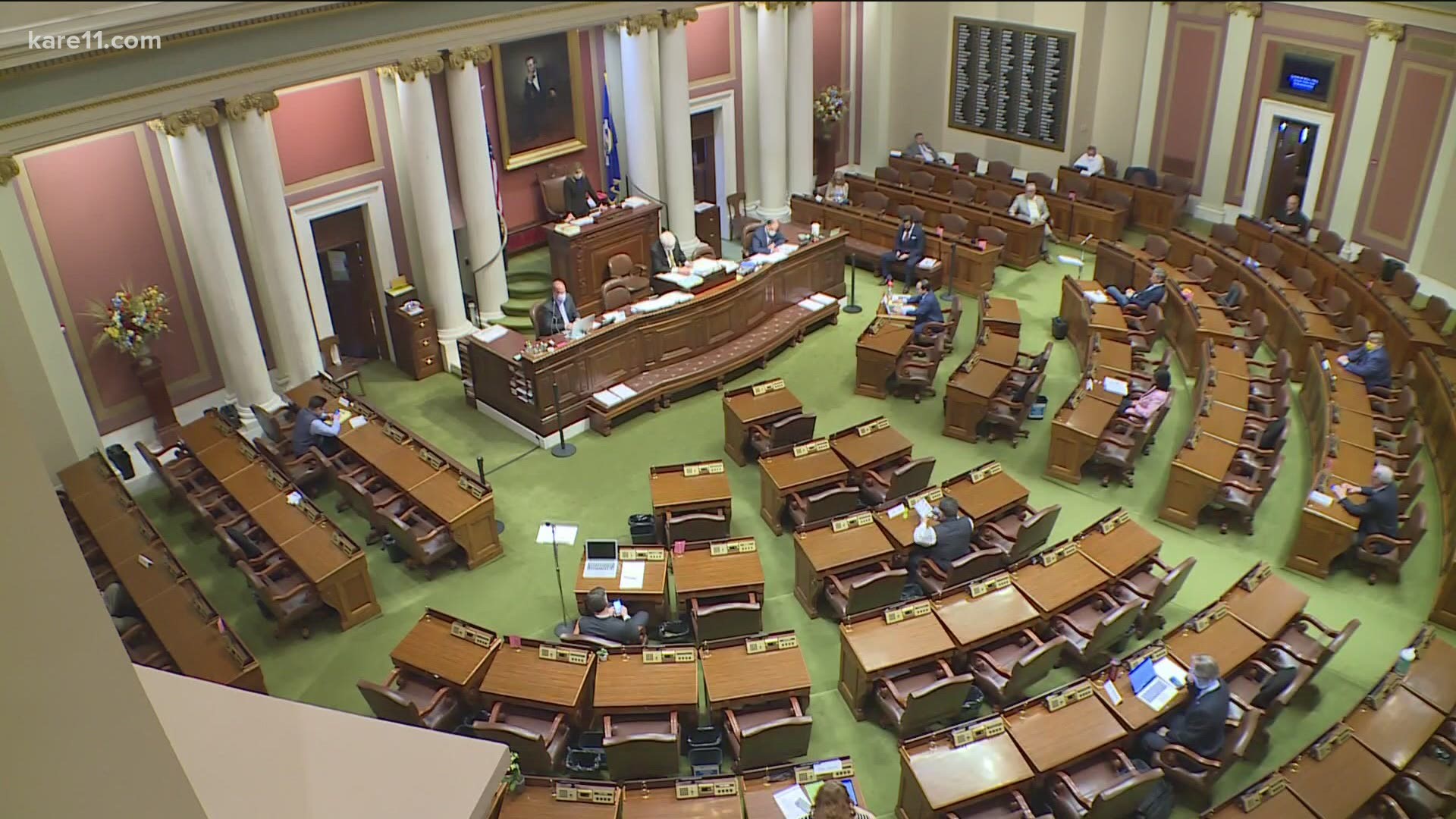ST PAUL, Minnesota — Gov. Tim Walz sees glimmers of hope that the steps Minnesotans took to limit large gatherings for Thanksgiving made a difference in the battle against community spread of COVID-19.
The test positivity rate - the percentage of those who test positive for the virus out of all tests collected - appears to be headed downward. The seven-day rolling average dropped to under 7% this week after going past 15% only a month ago.
That is one of the factors Walz will look at as he decides whether to extend his executive order barring indoor dining and drinking at bars and restaurants past Dec. 18. But Walz will wait until Wednesday, Dec. 16 to make that call because he's still waiting for more hospital data to arrive.
He contends the goal is to balance the needs of businesses to survive the pandemic with the public health mission of saving lives and preventing hospital intensive care units from being overwhelmed with new patients.
"Can you put 25 percent in restaurants and not see numbers go up? Because if the answer is yes you should do it," Walz told reporters at the Minnesota Department of Health coronavirus briefing Friday.
The MDH Public Health Risk Factor dashboard usually includes a seven-day lag as hospitals and county health departments submit their case information to the state.
"I know this is hard. The unknown and the uncertainty. That makes it difficult. In this case, and I hope you'd agree Minnesotans, we need to get this right, we need the most current data."
Walz is under mounting pressure to let his "pause" on restaurants, bars and fitness centers expire Dec.18 when the current executive order ends.
An ad hoc group of businesses are organizing a rebellion of sorts on Facebook, pledging to defy the governor's order if he extends it into Christmas and New Year's. A group of high school athletes and their parents have sued the Walz Administration over the temporary suspension of youth sports.
Minnesota Attorney General Keith Ellison Friday went to court to secure a temporary restraining order against the Boardwalk Bar and Grill in East Grand Forks, after that establishment announced on Facebook it would reopen to indoor service before the executive order expired.
State lawmakers are expected to pass a $216 million small business relief package on Monday to help restaurants, bars, gyms, theaters, convention centers and other enterprises who've lost at least 30% of their sales. Legislators are still negotiating over whether unemployment benefits should be extended
State's death toll mounts
Minnesota's top disease experts say, despite the good news on the test positivity rate front, the overall number of daily infections from community spread is still three times higher than expected. And the death toll continues to mount.
The state reported 94 new COVID-related deaths Friday, bringing the state's cumulative total to 4,292 deaths linked to the pandemic.
"We've had over 250 people die in the last 72 hours. That's approaching what we lose in a year on the highways," Walz remarked.
"It may appear in the general public as 'What's the big deal? Things are going back good.' That lag period is all focused on hospitalizations, deaths and the pressure on the systems."
To reinforce the need for basic safety precautions Walz shared the microphone Friday with doctors and nurses who've been battling the crisis in crowded hospitals.
Mimi Keeler, an emergency medicine nurse at St. Joseph's Hospital in St. Paul said it's heartbreaking to tell people they may have to take their sick family member to a different city to find an ICU bed. And many patients wait for one of those rooms to become available.
"We have a patient but there are no ICU beds available. And this patient needed intensive care treatment. We're having to keep people in the ED - the emergency department - for up to 8 hours and that creates all kinds of added stress," Keeler explained.
Dr. Peter Bornstein, a Twin Cities infectious disease specialist, told of walking into the room of a COVID patient who was on a ventilator. He said he heard crying, but new it couldn't be the patient.
"I realized there was an iPad on a stand at the height of his bed. And on the iPad there was a young woman watching her father. She was crying."
Bornstein and Keeler urged Minnesotans to think of those patients and the professionals trying to treat them as they decide whether to practice social distancing and wearing masks in public.


